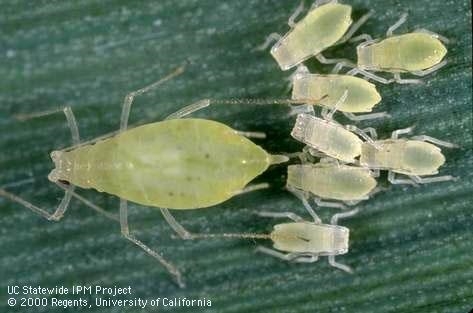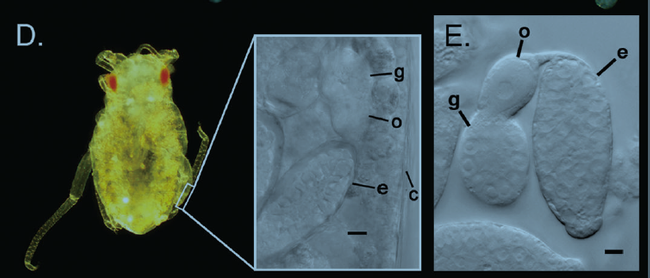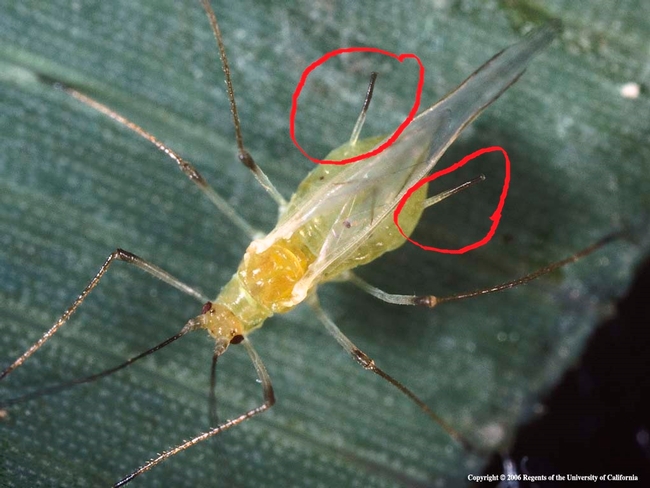We are all familiar with aphids, especially in the spring when their populations seem to increase so rapidly and may require control before plant damage occurs. Aphids have unique strategies to flourish. The aphid mother you see this spring is actually a grandmother. Her daughters and granddaughters are contained within the same body! She does not need sex to produce offspring. The individuals develop within her body and are deposited as live young. In this way, one female may produce as many as 80 individuals per week. It's a strategy that builds up aphid populations quickly to take advantage of fleeting advantageous environmental conditions and to overwhelm the abundant predators and parasites that can attack them.
Each individual of these 3 generations are genetically alike. Clones might be a disadvantage in a changing environment and pressure from pesticide applications since there is no recombination of genes afforded by sex. But insect ecologists have noted that spontaneous mutations in these clones are possible. If a favorable mutation occurs, then their populations are advanced quickly.
Most aphid species overwinter in the egg stage, and these eggs hatch in the spring into females that produce live young as described above. Several generations like this may be produced during the season. Sometimes winged individuals (see image below) may be produced that migrate off the original host plant species to a different plant species. In the latter part of the season, the aphids migrate back to the original host plant species and a generation consisting of both males and females are produced. The individuals of this generation mate, and the females lay eggs, which overwinter.
Aphid identification: Aphids have soft pear-shaped bodies with long legs and antennae, and may be green, yellow, brown, red, or black depending on the species and the plants they feed on. A few species appear waxy or woolly. Their feeding can cause distorted stems and leaves. They can transmit viruses. They often produce abundant sticky honeydew from their anus that can become colonized by “sooty mold” and become unsightly. Most species have a pair of tube-like structures called cornicles projecting backward out of the hind end of their body (see image below). Cornicles are like the exhaust pipes at the tail end of a hot rod, but in this case, secrete defensive fluid. The presence of cornicles distinguishes aphids from all other insects.
References:
Davis G.K. 2012. Cyclical parthenogenesis and viviparity in aphids as evolutionary novelties. J. Exp. Zool. 318B:448–459.
Dixon A.F.G. 1985. Structure of aphid populations. Ann. Rev. Entomol. 30:155-74
Flint, M.L. 2013. Aphids. Pest Notes. Publication 7404. University of California Statewide Integrated Pest Management Program.


